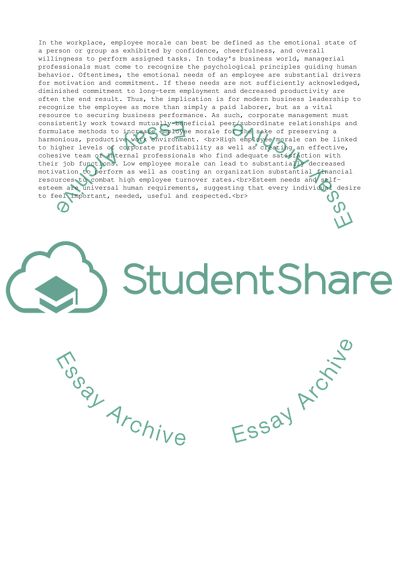Cite this document
(“Morale in the Workplace Essay Example | Topics and Well Written Essays - 2500 words”, n.d.)
Retrieved from https://studentshare.org/management/1538592-morale-in-the-workplace
Retrieved from https://studentshare.org/management/1538592-morale-in-the-workplace
(Morale in the Workplace Essay Example | Topics and Well Written Essays - 2500 Words)
https://studentshare.org/management/1538592-morale-in-the-workplace.
https://studentshare.org/management/1538592-morale-in-the-workplace.
“Morale in the Workplace Essay Example | Topics and Well Written Essays - 2500 Words”, n.d. https://studentshare.org/management/1538592-morale-in-the-workplace.


